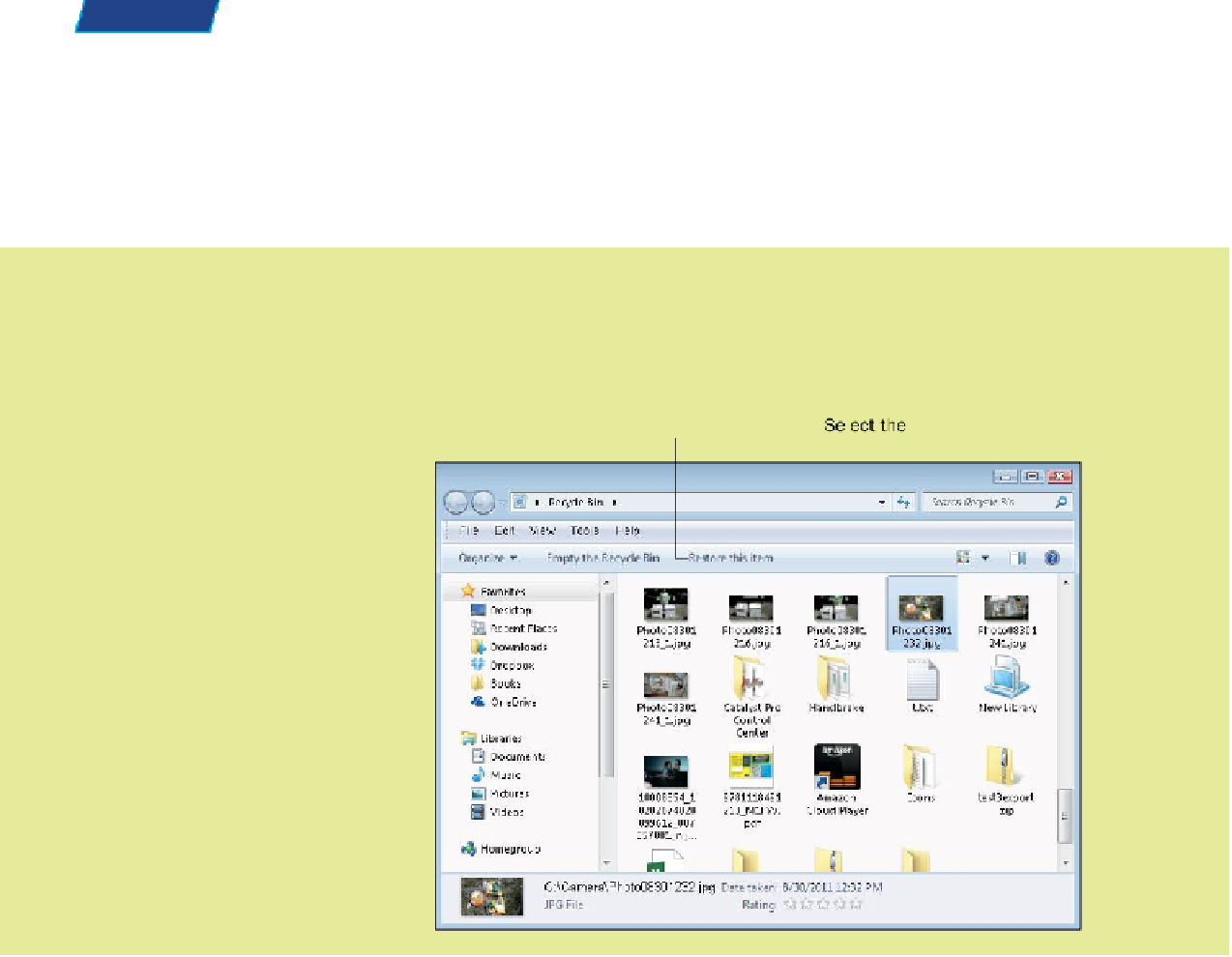Information Technology Reference
In-Depth Information
You can rename any file or folder. That does not mean, however, that you
should
. Many folders and files are
part of installed applications or Windows itself, and if you rename them, they may no longer function as
intended. To be safe, rename only files and folders that you have created.
CAUTION
Deleting a file sends it to the Recycle Bin, which is a temporary holding
area for deleted content. You can retrieve a deleted file or folder from the
Recycle Bin.
Step by Step
Restoring a Deleted Item from.the Recycle Bin
Follow these steps to retrieve a file or folder that you have deleted:
1
Double-click the Recycle Bin icon on the desktop to open the Recycle Bin window.
2
Select the deleted item to
restore.
3
Click the Restore This Item but-
ton on the command bar.
Moving and Copying Files and Folders
You can move and copy files and folders from and to any location. This
enables you to transfer your data files from your hard drive to a remov-
able drive such as a USB flash drive, for example.
The same warning applies to moving files as to deleting them: If you move a file that an application or
Windows relies on, Windows or an application may not function as expected anymore.
CAUTION
There are many ways to move and copy items. You can use the Windows
Clipboard, or drag and drop files from one location to another, or you can
use the Move to Folder or Copy to Folder command in Windows Explorer.




















